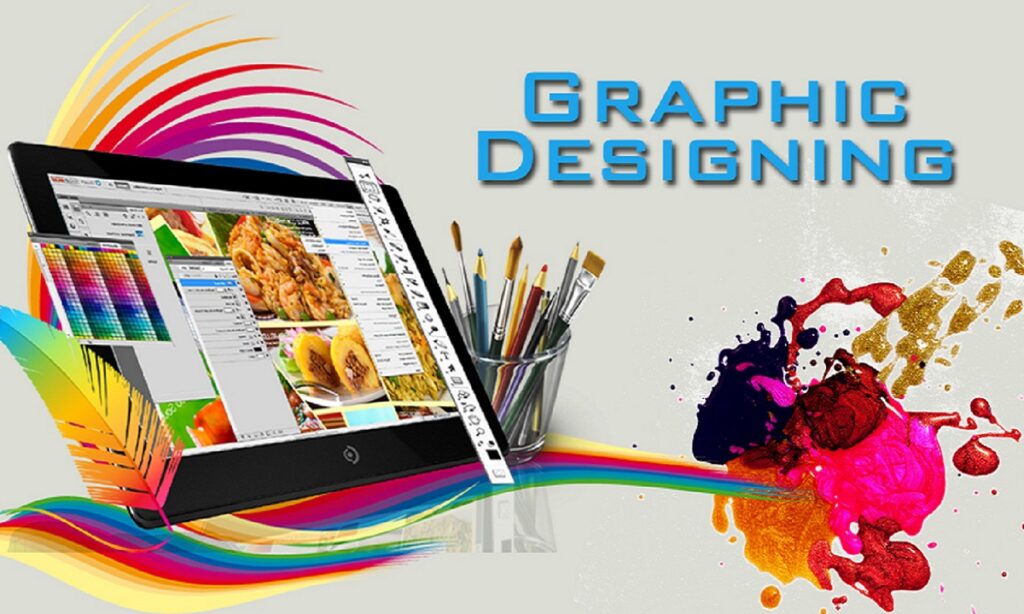Creating a comprehensive course on graphics and design involves covering a range of topics to equip learners with the skills and knowledge needed to excel in visual design. Here’s a structured outline for a Graphics & Design course, including key topics, learning outcomes, and methods of delivery:

Course Outline: Graphics & Design
1. Introduction to Graphic Design
- Overview of Graphic Design
- History and evolution of graphic design
- The role of graphic design in various industries
- Key Design Principles
- Balance, contrast, emphasis, movement, pattern, rhythm, and unity
- Design Thinking
- Problem-solving approach in design
2. Design Tools and Software
- Introduction to Design Software
- Adobe Creative Suite (Photoshop, Illustrator, InDesign)
- Alternatives like Canva, Affinity Designer, and GIMP
- Basic Functions and Features
- Navigation, toolbars, and workspace customization
- Hands-On Practice
- Creating simple projects to get familiar with tools
3. Typography
- Understanding Typography
- Font types: Serif, sans-serif, script, and decorative
- Font anatomy: Baseline, ascenders, descenders, etc.
- Choosing and Pairing Fonts
- Best practices for readability and aesthetics
- Designing with Type
- Creating typographic layouts and using type as a design element
4. Color Theory
- Color Basics
- Color wheel, primary, secondary, and tertiary colors
- Color Harmonies and Schemes
- Complementary, analogous, triadic, and monochromatic color schemes
- Color Psychology
- How colors affect emotions and perceptions
- Practical Exercises
- Creating color palettes and applying them to design projects
5. Layout and Composition
- Principles of Layout
- Grid systems, alignment, and spacing
- Creating Effective Layouts
- Designing for print and digital mediums (e.g., posters, websites)
- Practical Applications
- Designing brochures, flyers, and web pages
6. Visual Communication
- Understanding Visual Hierarchy
- Importance of focal points, scale, and contrast
- Designing for Different Mediums
- Print vs. digital design
- Creating Visual Assets
- Icons, infographics, and illustrations
7. Branding and Identity
- Branding Basics
- Elements of branding: Logos, color schemes, typography
- Designing a Brand Identity
- Creating brand guidelines and visual consistency
- Case Studies
- Analyzing successful branding examples
8. User Experience (UX) and User Interface (UI) Design
- Principles of UX/UI Design
- Understanding user needs and behaviors
- Designing Interfaces
- Wireframing, prototyping, and user testing
- Best Practices
- Designing for usability and accessibility
9. Advanced Design Techniques
- Illustration and Digital Art
- Techniques for creating custom illustrations
- Animation and Motion Graphics
- Basics of animation principles and tools like Adobe After Effects
- 3D Design Basics
- Introduction to 3D modeling and rendering
10. Portfolio Development
- Building a Strong Portfolio
- Selecting and presenting your best work
- Creating a Personal Brand
- Online presence, social media, and professional networking
- Feedback and Improvement
- Reviewing and refining portfolio pieces
Delivery Methods
- Video Tutorials: Detailed explanations and demonstrations of design techniques.
- Live Workshops: Interactive sessions with Q&A to address specific topics.
- Text-Based Guides: In-depth articles and written content for reference.
- Interactive Quizzes: Assess understanding and retention of key concepts
